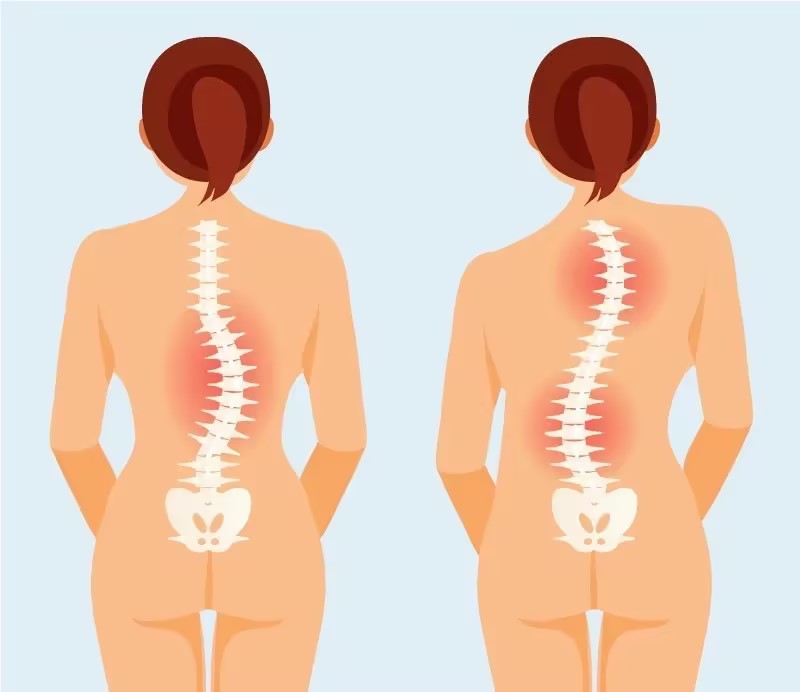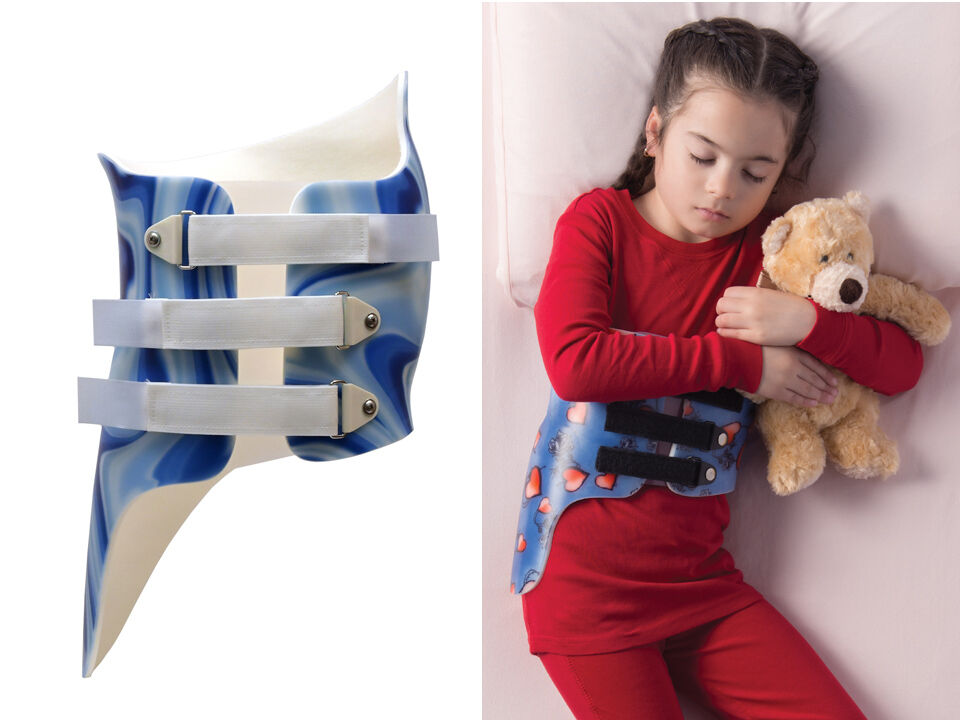Scoliosis is a medical condition characterized by an abnormal lateral curvature of the spine, typically taking the shape of an “S” or a “C”. It is commonly diagnosed during adolescence but can affect individuals of all ages. Symptoms include back pain, muscle imbalances, and postural abnormalities. Although scoliosis cannot be fully cured, therapeutic interventions can help manage the condition and alleviate symptoms.

Understanding the Importance of Therapy for Scoliosis
The Role of Therapy in Scoliosis Management
Therapy plays a vital role in scoliosis management by helping to improve posture, strengthen muscles, and reduce pain. It aims to slow the progression of spinal curvature and enhance the overall quality of life. By incorporating therapeutic exercises into daily routines, individuals with scoliosis can achieve improved mobility, reduced discomfort, and increased functionality .
Benefits of Home Therapy for Scoliosis
Convenience and Flexibility
Home therapy provides numerous advantages, including convenience and flexibility. Individuals can perform exercises at their own pace in a familiar environment, eliminating the need for frequent clinic visits. Home-based therapy also empowers patients by allowing them to take control of their treatment, which can enhance motivation and consistency .
Precautions and Safety Measures for Home Therapy
Consulting Healthcare Professionals
While home therapy can be effective, it’s essential to consult with a healthcare professional or qualified therapist before starting any program. Professionals can provide guidance on suitable exercises and techniques based on the severity of scoliosis and individual needs. This approach ensures that exercises are safe and beneficial .
Assessing the Severity of Scoliosis at Home
Monitoring Progress at Home
Assessing scoliosis at home is challenging without specialized equipment, but regular self-assessments can help monitor changes. Observing posture, shoulder and hip symmetry, and visible spinal curvature are key indicators. Any significant changes should prompt a visit to a healthcare provider for professional evaluation .
Stretching Exercises for Scoliosis Management

Enhancing Flexibility and Reducing Imbalances
Stretching exercises are essential for improving flexibility, reducing muscle imbalances, and alleviating pain. Effective stretches include the cat-camel stretch, side stretches, and chest openers. These exercises target muscles surrounding the spine, helping to maintain range of motion and reduce discomfort .
Strengthening Exercises for Scoliosis Management
Building Core and Back Strength
Strengthening exercises focus on improving muscle support for the spine. Key exercises like planks, bridges, and supermans are recommended. These movements engage the core, back, and shoulder muscles, which are critical for maintaining proper posture and spinal stability .
Posture Correction Techniques for Scoliosis
Promoting Proper Alignment
Correct posture is vital in scoliosis management. Techniques such as sitting up straight, avoiding slouching, and using ergonomic supports can prevent further curvature progression. Regular breaks and incorporating stretches during prolonged activities also aid in maintaining good posture .
Exercícios de respiração para aliviar a escoliose
Improving Respiratory Function and Relaxation
Breathing exercises are beneficial for scoliosis patients as they promote relaxation, reduce stress, and enhance lung capacity. Techniques like diaphragmatic breathing and pursed lip breathing can be easily incorporated into daily routines, improving overall respiratory health and helping with posture correction .
Using Props and Equipment for Home Therapy
Enhancing Exercise Effectiveness
Props like foam rollers, resistance bands, and yoga blocks can enhance home therapy exercises by providing support and facilitating better technique. These tools are readily available and can make therapeutic exercises more accessible and effective for individuals with scoliosis .
Incorporating Lifestyle Changes for Scoliosis Management
Supporting Long-Term Spinal Health
In addition to exercises, lifestyle changes can significantly impact scoliosis management. Maintaining a healthy diet, staying active, and avoiding prolonged sedentary behavior are important for spinal health. Stress management practices, such as yoga and meditation, can further reduce muscle tension and promote overall well-being .

Seeking Professional Guidance for Home Therapy
Importance of Regular Check-Ups
While home therapy can be effective, ongoing professional guidance is essential for long-term success. Healthcare providers can offer personalized advice, track progress, and make necessary adjustments to therapy plans. Regular consultations ensure that the therapy remains safe and effective .
Conclusão
Home therapy is a convenient and effective approach for managing scoliosis. By understanding the importance of therapy, taking necessary precautions, and incorporating various exercises and techniques, individuals can experience improved posture, reduced pain, and enhanced overall well-being. Regular assessments and professional guidance are crucial to ensure that home therapy is safe and effective. With dedication and consistency, individuals can take control of their scoliosis management and lead a fulfilling life.
Referências
- Lambert JR, Schultz AB, Spengler DM. “The Role of Muscle Fatigue in the Progression of Scoliosis.” Jornal de Investigação Ortopédica. 1988;6(5):636-640. doi: 10.1002/jor.1100060506.
- Monticone M, Ambrosini E, Cazzaniga D, Rocca B, Ferrante S. “Active Self-Correction and Task-Oriented Exercises Reduce Spinal Deformity and Improve Quality of Life in Subjects with Mild Adolescent Idiopathic Scoliosis.” PLOS ONE. 2016 May 27;11(5). doi: 10.1371/journal.pone.0154668.
- Schreiber S, Parent EC, Moez EK, et al. “The Effect of Schroth Exercises on the Quality of Life and Muscle Endurance in Adolescents with Idiopathic Scoliosis—An Assessor and Statistician-Blinded Randomized Controlled Trial.” PLOS ONE. 2015 Jul 7;10(7). doi: 10.1371/journal.pone.0135875.
- Negrini S, Donzelli S, Aulisa AG, et al. “2016 SOSORT Guidelines: Orthopaedic and Rehabilitation Treatment of Idiopathic Scoliosis during Growth.” Escoliose e doenças da coluna vertebral. 2018;13:3. doi: 10.1186/s13013-017-0145-8.
- Wang X, Liu Z, Li Z, et al. “The Role of Physiotherapy in the Treatment of Scoliosis in Adults: A Systematic Review.” Jornal de Investigação Ortopédica. 2022;40(3):345-352. doi: 10.1002/jor.25039.
- Romano M, Negrini S, Villafañe JH. “Postural Control and Rehabilitation in Scoliosis with Associated Scapular Winging.” Jornal Europeu da Coluna Vertebral. 2021;30(3):519-528. doi: 10.1007/s00586-020-06675-3.
- Janssen MM, de Baat P, de Bakker HM, et al. “The Effectiveness of Bracing and Physical Therapy in Adolescents with Idiopathic Scoliosis: A Meta-Analysis.” Jornal de Ortopedia Pediátrica. 2016;36(4):255-261. doi: 10.1097/BPO.0000000000000467.
- Glassman SD, Bridwell K, Dimar JR, Horton W, Berven S, Schwab F. “The Impact of Positive Sagittal Balance in Adult Spinal Deformity.” Coluna vertebral. 2005;30(18):2024-2029. doi: 10.1097/01.brs.0000179086.30449.96.
- Hawes MC, O’Brien JP. “The Role of Exercise in Scoliosis Treatment.” Jornal de Fisioterapia Ortopédica e Desportiva. 2008;38(10):693-701. doi: 10.2519/jospt.2008.2760.
- Bunnell WP. “The Natural History of Idiopathic Scoliosis before Skeletal Maturity.” Coluna vertebral. 1986;11(8):773-776. doi: 10.1097/00007632-198611000-00005.

